Your WordPress theme design is no doubt a key driver of sales. If people get impressed while watching your theme demo, they are not far from making a purchase. The problem is it’s quite challenging to bring them to that ready-to-buy moment without proper marketing.
Competition of WordPress developers seems to be tougher than of two neighboring barbershops. Digital marketplaces are loaded with thousands of themes, and imagine how many of them don’t even get there. Not all developers are willing to share their incomes with third parties, you see.
While theme marketing is quite challenging today, you can make it a bit easier at the development stage. To release a product that would be easy to promote in organic search, you must focus on users’ queries in the first place. The formula is quite simple. The more queries your theme can match, the more times it can show up in front of your target audience.
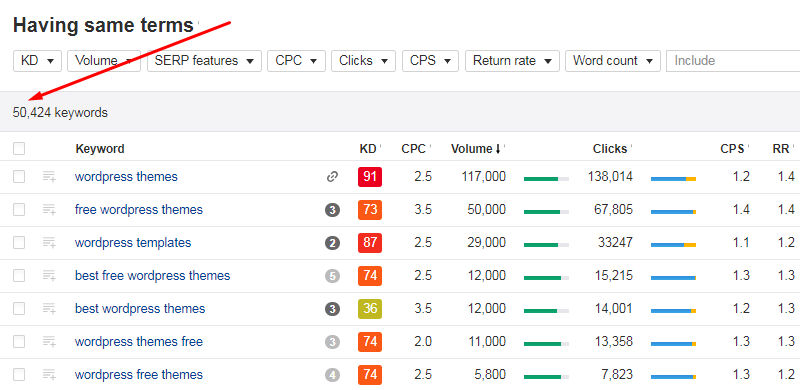
There are currently over 50,4K+ search queries including “WordPress themes” and “WordPress templates” in the Ahrefs’ database. Let’s drill down on this data to understand common search patterns and how to match more of them with your WordPress themes in 2018.
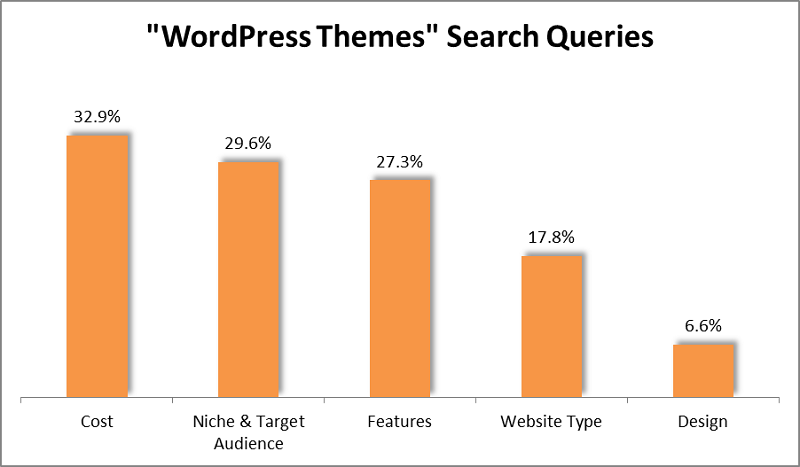
Cost-Based Queries
I hate to admit it but money rules the web just like the physical world. Queries with price mentions are more common in organic search than others – 16,5K+ or 32.9%. What’s interesting is that most of them (14,5K+) include “free,” “freemium,” and “freebies” modifiers. To compare, only 1,4K+ queries are for “premium” and “paid” WordPress themes.
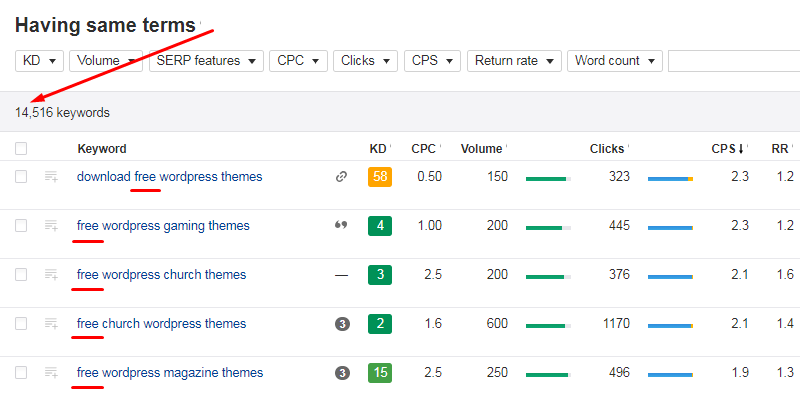
The data proves that free themes rank in organic search quite often. By no means, I suggest that you should give away your entire product for nothing. Instead, release a free version limited to standard features only, while advanced functionalities can be available in a paid package.
Besides driving organic traffic, you’ll be able to submit your free theme to wordpress.org and get it featured in multiple compilations of freebies. Having free access to your product, some bloggers may even want to give it a test-drive and review in a standalone post, why not?
Free stuff can also grow your website’s backlink profile, which is exactly what influences organic search positions. Google relies on backlinks to understand if a site is good enough to suggest its content to users in the Top 10. The more backlinks your theme earns, the higher its landing page will rise in SERP.
As you can see, being generous with the WordPress community can pay off in many ways. Just make sure your freebie is of decent quality. Sharing another third-rate item won’t get you far. Learn what themes bring traffic to your competitors and try to outperform them with yours. Your theme must be ten times better than anyone else’s.
Feature-Related Queries
Advanced WordPress users already know what features they need the most, so they specify them in Google search. Over 13,7K+ or 27.3% of queries include various feature-related modifiers. It can be some plugin integration (BuddyPress, Jigoshop), layout type (grid-based, three-column, one-page), navigation (vertical menu, infinite scroll), usage (drag and drop, WYSIWYG), animation (parallax, static), license (GPL, commercial), etc.

The bottom line is to release a theme in a fully featured package. Not only will it match more queries, but will also look more valuable for a purchase.
Also, make sure your theme complies with all the modern web standards, as they often appear in search queries too. For example, responsive design has a direct impact on Google rankings, which makes it a critical feature by default – there are 2,6K+ queries with “responsive” and “mobile” modifiers.
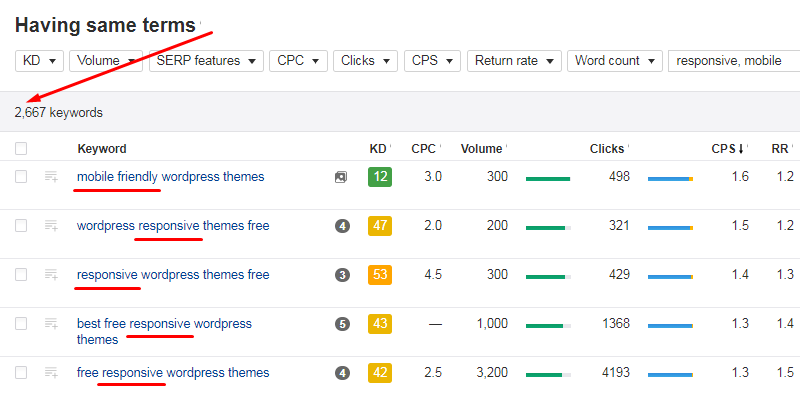
Website Type Queries
Each type of websites has its own specifics, so searchers mention it to skip unnecessary stuff at once. 8,9K+ or 17.8% of queries have a website type modifier.
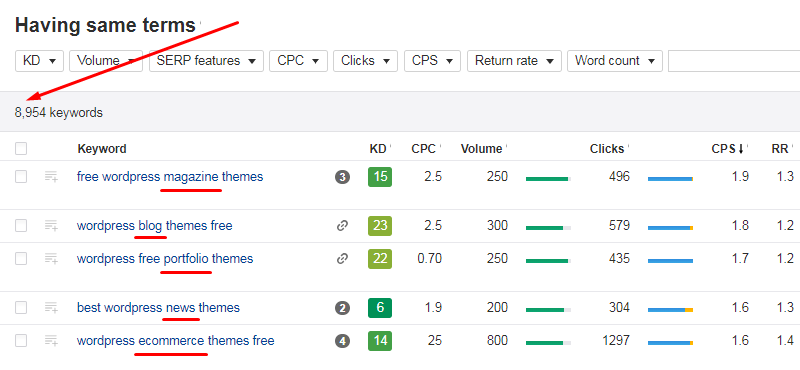
Do you wonder how your portfolio theme could match queries related to eCommerce? The trick is to build a multipurpose theme that would fit different types of sites.
For example, product showcase is not the only use case of a digital portfolio. Most likely designers won’t mind selling their items from there, so eCommerce functionality will come in handy for them. Here are some other website types to integrate into a portfolio:
- blog to share product updates, inform visitors of industry trends, etc;
- knowledge base to let customers find answers themselves instead of bombarding you with tons of similar questions;
- forum to interact with your target audience.
With so many benefits, a multifunctional site has become the gold standard of the web. No wonder multipurpose themes generate thousands of sales and must be at the top of your to-do list.
Niche & Target Audience Queries
Over 14,9K+ or 29.6% of queries are shaped by the theme niche and its target audience. With such modifiers, searchers can find a better fit for their businesses. If it’s fashion or photography, they naturally need a theme with a heavy focus on visuals. When it comes to education or law sites, they require a more informative layout rather than visually rich.
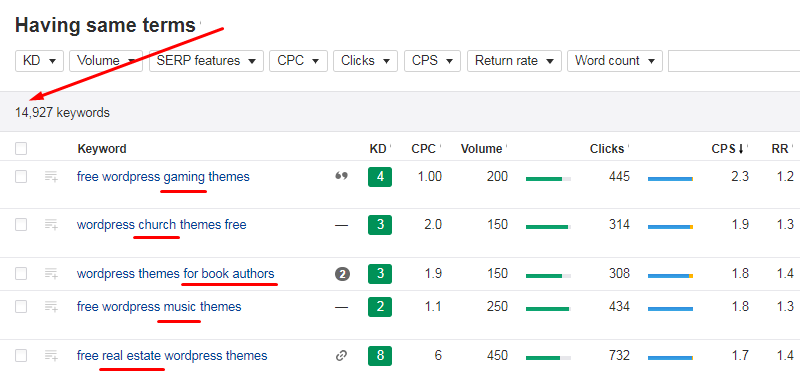
To match more niche-related queries, your parent theme should come with a variety of child themes. Since customers will get many designs for the price of one, they’ll be more interested in making such a profitable purchase.
Design-related Queries
The theme design is another factor that influences searches – over 3,3K+ or 6.6% of queries include such a modifier as a style, color scheme, etc. Users mention these details to find a theme that would match their corporate style out of the box and minimize customization. That’s actually the primary purpose of using a ready-made theme – to get a site up and running with minimum efforts.
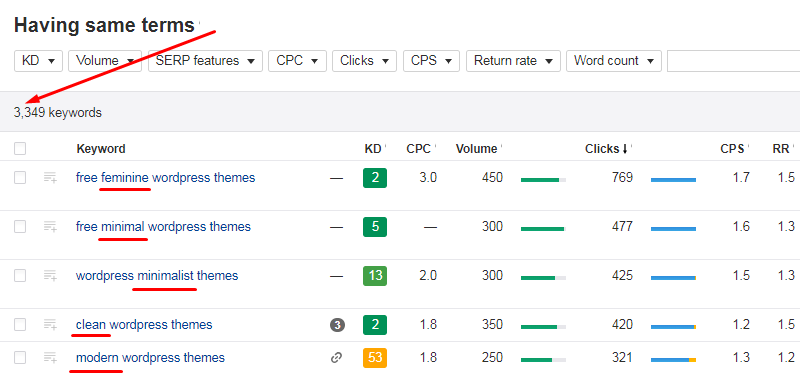
If you want your theme to rank for more design-related queries, add skins in different styles to its package.
Question-Based Queries
Note that a big part of your target audience doesn’t google “WordPress themes” at all. Most likely they don’t even know about WordPress or ready-made themes that speed things up. Instead, their queries consist of phrases like “create/make/design a website” and question words like “how,” “where,” etc – 55,5K+. Each query can get up to 46K monthly searches, which means there’s a broad audience to target.
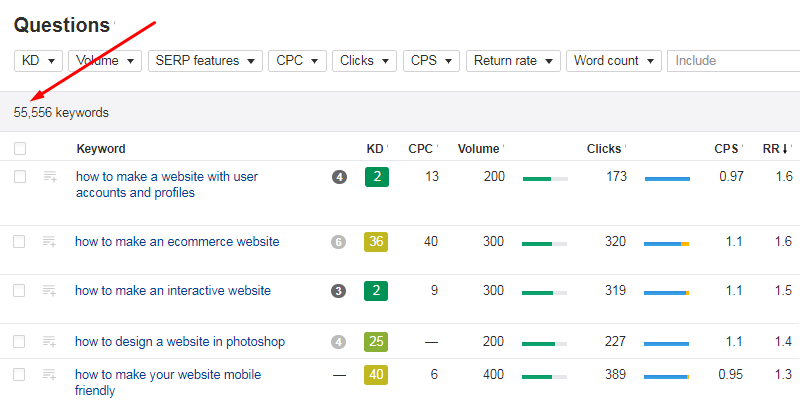
As shown below, the most common type of question-based queries includes “how” – 50,2K+ or 90.5%. To catch people who google such queries, you should launch a blog and publish helpful guides on how to create or optimize a website built with WordPress and your theme.
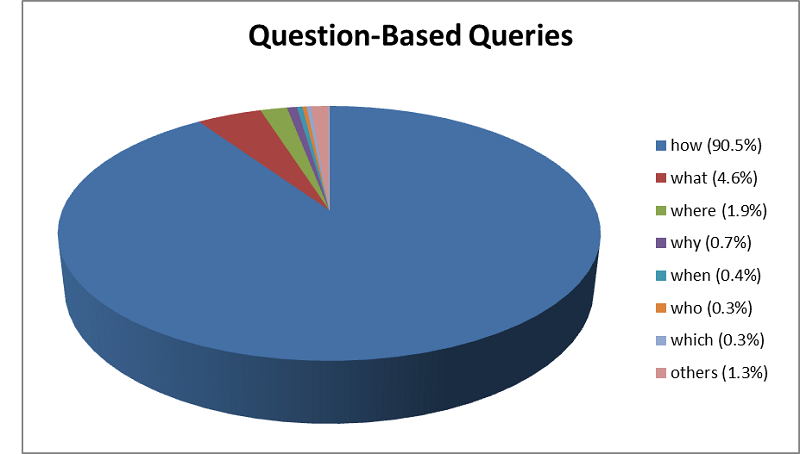
Seasonal Queries
The next thing to understand is the search demand for WordPress themes in 2018. Not all of them get searched for all year round. Let’s say you’re going to release a theme for some seasonal site like a Christmas store. Naturally, it will attract the audience within a limited period.
The interest in “Christmas themes” starts a few months before the holiday, reaching its highest point in early December. And then, starting from January, the query gets little to no searches. There’s hardly anyone who is going to build a Christmas store a year ahead. To find out for how long your themes are in demand, use Google Trends.
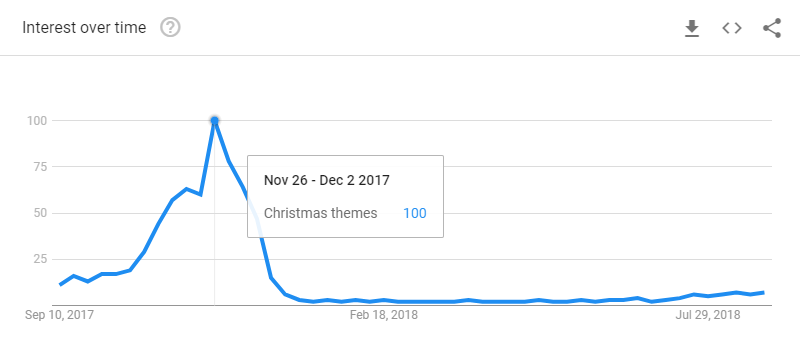
Unique Queries
The WordPress community doesn’t need another deja vu. I mean a theme that looks and feels just like thousands of others. Instead of cloning your designs, focus on the unique selling point.
Go to WordPress forums, Quora, Reddit, and Facebook groups to figure out what users need, but don’t have yet. Then, try to develop a theme based on their unmet needs. Giving something no one else has, you’ll build an excellent reputation for your biz in the WordPress community. It will pay off with a loyal, ready-to-buy audience.
Replace Discontinued Themes with Yours
In the course of time, WordPress themes go out of date, either in their looks or functionalities or both. It makes no sense to keep them on sale anymore, so companies remove them from their marketplaces. Guess what happens to posts with discontinued items on the list. Correct! They get broken links.
For example, one of the top WP blogs has 1,472 pages with broken links. That’s a broad playing field for you.
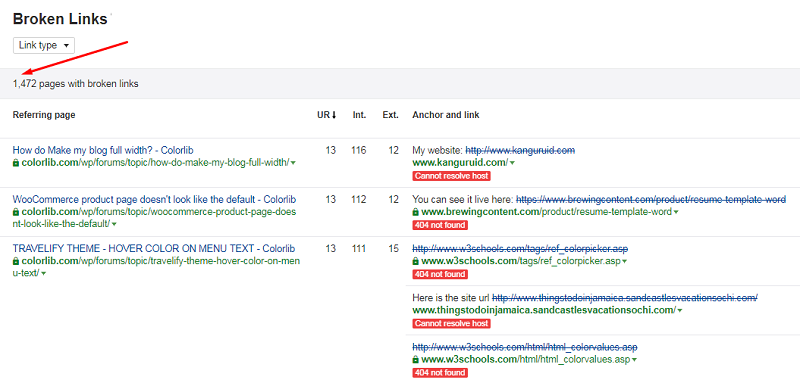
As a WordPress developer, you can take advantage of such a situation. Here are the steps to follow.
- Check web design blogs for broken links pointing to discontinued themes.
- Develop a theme of a similar topic, but much better functionality and design.
- Reach out to owners of those blogs and offer them your product as a better alternative.
Both of you will win. Your designs will gain exposure and backlinks, while blog owners will fix broken links and provide relevant info for their readers. Check out more ways to build links to your WordPress themes in 2018 naturally, i.e. without any shady tactics forbidden by Google.
Wrap-up
As you can see, the more your theme provides, the more search queries it will match. But it’s more about diversity rather than quantity. Different features must serve different purposes. There’s no point in loading your theme package with five visual composers. Even if these tools have some minor differences, they all serve the same purpose and therefore match the same query. Always think of the value your theme can provide for the WordPress community.
About the Author:
Nick Campbell is a content marketer and outreach manager at Ahrefs. He is passionate about technology, SEO, and blogging trends. When Nick is not researching a new topic, he’s probably at some tech event.

